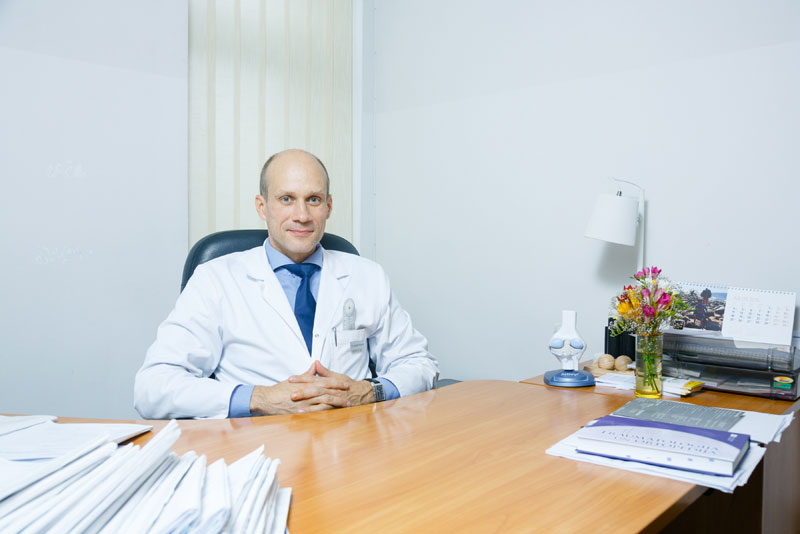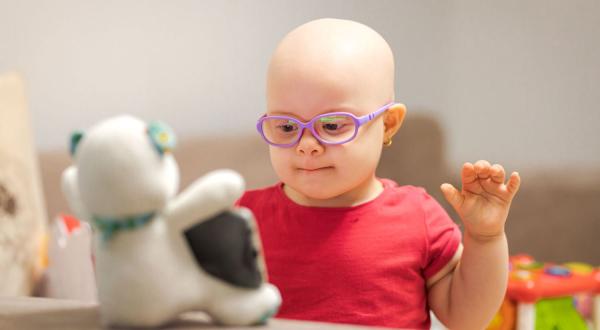My doctoral studies have provided a good boost to my personal development
RSU doctoral student Sandris Petronis
Doctoral study programme: Medicine
Thesis title: Reactogenicity of Synthetic Calcium Phosphate Bioceramics in Osteoporotic Fracture Area. Experimental and Clinical Study
Scientific supervisors: Prof. Māra Pilmane, Prof. Andrejs Skaģers

WHO?
"Loads of work add colour to my life and prevent from getting into a rut. It is not easy to juggle multiple roles that I have: surgeon, head of the department and university teacher. However, in spite of heavy workload, inspired by professor Skaģers, five years ago I decided to commence doctoral studies. After work with brief pauses of rest I am finally approaching the finish line. Looking back at this time, I would say that it contributed to the development of my personality.
Similarly to actors’ children, who spend their childhood behind the scenes and occasionally stay there, my father [chair of the board of Riga Hospital No.2 traumatologist-orthopaedist Jānis Petronis] had a great impact on my career and the decision to become a doctor came naturally. I may say that I spent my childhood in my current work place – I was sitting here and doing my homework. To my mind, being a doctor is the best job. Though, the sweet is never as sweet without the sour. Still, job satisfaction is worth the sweat."
WHAT?
"Osteoporosis leads to the loss of calcium and bone fractures. A bone itself is a perfect substitute of the bone. It means that this material has to be taken from human body that is associated with additional surgery and even greater chance of getting trauma. Thus, studies of various biomaterials have taken place for decades in the world. Rudolfs Cimdins Riga Biomaterials Innovations and Development Centre of Riga Technical University (RTU) is the leading institution in Latvia in this field. Both universities – RTU and RSU – have a long-standing successful cooperation. Professor Skaģers is a coryphaeus of this field from the perspective of medicine. Topic of my thesis – use of bioceramics in long bones of the body, such as femoral bones – has not been studied in Latvia yet. Therefore, I decided to focus on the use of calcium phosphate bioceramics in large bone fractures."
"Doctoral studies enrich me as a doctor, as on a daily basis I perform surgeries, whereas while writing my thesis I analyse my surgery results and look at my work from a different perspective. Me and my patients benefit from it," says 3rd year doctoral student and traumatologist and orthopaedist Sandris Petronis.
HOW?
"An experimental part is included in the study. It took place at RSU Experimental Animal Laboratory. Me and professor Skaģers performed experimental surgeries on rabbits, occasionally a residency student came to assist us. The study also consisted of a clinical part with participation of patients of Riga Hospital No.2. It was exciting to go back to the beginnings of medical studies and recall analysing microscopic bone structures under the supervision of professor Māra Pilmane at the Anatomical Theatre and evaluating the recovery potential of the bone after implantation of bioceramic granules after immunohistochemical reaction. Surgeon’s daily routine that involves evaluating surgery results from clinical perspective is one thing, whereas, viewing these results with the naked eye under a microscope and analysing them is a totally different thing.
The majority of my patients suffer from femoral fractures that require routine surgeries. The thesis allowed me to look at health issues of my patients from different perspective trying to figure improvement opportunities. I’ve recently arrived from a conference that took place in USA and there I became aware of the world tendency, namely, in future, besides reading current medical literature, surgeons will have to analyse their performance in the operating room, collect and analyse data obtained by themselves. Patients benefit from doctors engaged into research."
CONCLUSIONS
"It is typical for human to strive for improvements and alternative bone substitutes have been studied for decades. To date bioceramic materials have been studied and used in maxillofacial surgery in Latvia, whereas, results of my study lead to the conclusion that this material is well tolerated by the patients suffering from long bone fractures and contributes to healing of large bone fractures.”
I see doctoral studies as a process rather than result. Owing to doctoral studies, I crossed paths with knowledgeable and dedicated people, whom most likely I would not meet under other circumstances. I benefited from working with professor Līga Bērziņa-Cimdiņa, Dagnija and Jānis Loči from RTU Rudolfs Cimdins Riga Biomaterials Innovations and Development Centre, veterinary surgeons and zoologists from RSU Experimental Animal Laboratory. It was essential to return to the Anatomical Theatre headed by professor Māra Pilmane and work as a teacher at RSU Department of Orthopaedics under the supervision of professor Andris Jumtiņš. I owe to RSU professor Sandra Lejniece and professor Aigars Pētersons for inspiring me."
Related news
 RSU researchers explain how digital technologies help paediatric oncology patientsRSU in the news, Consolidation, Research
RSU researchers explain how digital technologies help paediatric oncology patientsRSU in the news, Consolidation, Research


